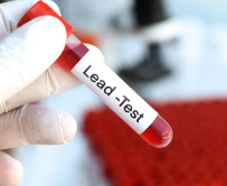
Mollusks are the organisms most used as bio-monitors of trace metal contamination in biomonitoring investigations. Bivalve and gastropod mollusks can accumulate high concentrations of organic and inorganic contaminants, and chemical analysis of organismal tissues provides evidence of the bioavailability of trace metals in seawater and sediments over time. Lead is an accumulative toxicant, and filter-feeding seafood such as shellfish can enrich lead and cadmium in the water column. The general regulation is that lead should not exceed 0.5 mg/kg in fish and crustaceans and 1.5 mg/kg in bivalves.
Lead (II) is widely regarded as a highly toxic and non-degradable metal ion, usually present in environmental water due to its extensive use in industrial applications. The widespread presence of lead in the environment comes from human activities. The most important sources of lead contamination include industrial emissions, soil, batteries, cigarettes, sheet metal, paint, building construction, automobile exhaust, contaminated food, and fish tissue. When water and food samples are present near lead sources, they may contain high concentrations of lead ions. There are also natural sources, such as lead, crushed lime tones, galena, volcanic activity, and airborne dust. Trace accumulation of lead ions in biological processes may lead to various health risks, such as neurological disorders, neurobehavioral disorders, liver and kidney damage, lung disease, stroke, hypertension, and weight loss, and is particularly potentially harmful to the neurodevelopment of infants and children. The methods currently available for the detection of Pb (II) ions include spectrophotometry, fluorescence spectrophotometry, atomic absorption spectrometry, inductively coupled plasma mass spectrometry (ICP-MS), graphite furnace atomic absorption spectrometry (GFAAS) and inductively coupled plasma atomic emission spectrometry (ICP-AES).
Lifeasible specializes in providing professional mollusk heavy metal testing to analyze the residual Pb (II) content in mollusks and risk assessment and mollusk decontamination capacity for Pb (II).
The molluscan tissue components to be tested are ground up, acid digested, and the resulting product diluted into volumetric flasks.
The analysis of metals is performed by ICP-MS, and the amount of Pb (II) in mollusks is determined by calculation.
Mollusks uncontaminated by Pb (II) were placed in Pb (II) ion solutions at different concentrations to observe their health status. And then, the amount of metal ions contained in the mollusks at different times was examined, and the mollusk decontamination capacity was evaluated.
Hazard identification is the determination of the inherent hazard properties of a chemical substance and consists of two main parts: ecotoxicological and health toxicological properties.
Dose (concentration)-response (effect) assessment is determining the relationship between the exposure concentration/dose of a chemical substance and its toxic effects.
Exposure assessment estimates the degree of exposure to chemical substances to the ecological environment or human body.
If you are interested in our services, or if the service you want is not listed, please feel free to contact us, and we will get back to you as soon as possible.